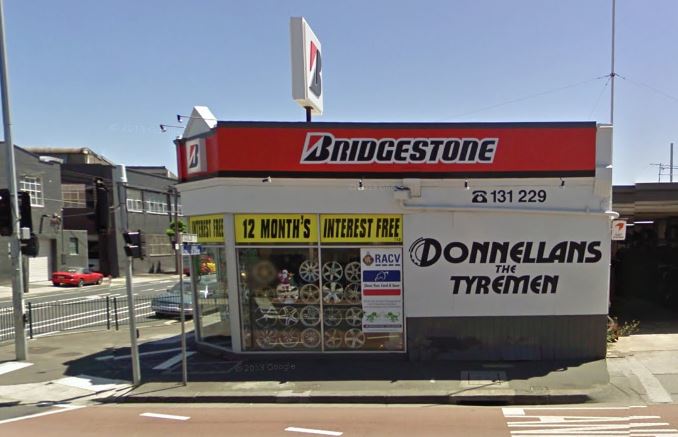Back to Latest News
How to properly clean your windscreen
Windscreens on cars used to be made of simple plain glass and were primarily designed to keep wind and rain away from occupants. However as vehicle speeds have increased and safety standards have been improved, vehicle glass has shifted away from simple single panes and moved towards laminated glass and tempered glass.
Laminated Safety Glass
Today's windscreens are made from laminated glass, that is, two layers of glass with an optically transparent plastic film in between. The plastic film keeps the glass mostly intact in the event of a cracked or smashed window.
Windscreens are not made of tempered glass because a single stone chip would render the entire windscreen impossible to see through.
Tempered Glass
Vehicle side windows are made of tempered glass. Tempering is a method of hardening glass by heating it and rapidly cooling it, which causes the internal layer of glass to be under immense pressure, while the outside is under tension.
When a tempered window breaks, the entire pane will shatter into thousands of tiny small pieces which are less likely to cause serious injuries when compared to larger panes of shattered glass. Tempered glass is commonly used on vehicle side windows and rear windows.
Other window materials:
Although it is rarely seen in mass production vehicles, some specialty vehicles, including race cars, one-off custom vehicles, show cars and more will often use a type of plastic called polycarbonate. It’s lightweight, impact resistant and while it comes in flat sheets, it can be heated and bent to fit a curved window frame perfectly. The downside is that it can be scratched easily and damaged by common cleaning chemicals.
What causes a dirty and streaky car windscreen?
The outside of your windscreen will gather bugs, dirt, dust, stone chips and more over time and this is just through normal use on sealed roads, this is to speak nothing of dirt, dust and mud from off-road use.
Old and damaged windscreen wipers can also cause visibility issues, especially if the rain is light and the windscreen is dirty. Old wipers will not cleanly remove water and often leave steaky marks that impede vision.
On the inside of the windscreen, things aren’t much better. Moisture and condensation inside the car combine with off-gassing from interior plastics, and it’s very common to see a thin greasy film on the inside of your car windows that is stubborn and resists attempts to clean it. This is where most of the glare comes from when driving at night.
How to keep your windscreen immaculate
All of us have had a dirty windscreen before and while the old t-shirt on the back seat works okay, taking 10 minutes on a weekend to do the job properly will pay off in spades.
Properly cleaning your vehicle glass isn’t rocket science, but it makes a world of difference when it comes to driving in the rain, towards the sun, or in glary conditions.
Inside:
Cleaning the inside of your windscreen is where most people start, and finish. Arguably, it’s also where most of the streaking and glare comes from.
Start with a hot, damp (but not wet) cloth and begin by wiping around the edges of your windscreen. Towards the edges is where most of the dirt and grime will accumulate and not cleaning these areas before working on the rest of the window risks dragging dirt back over the parts of the windscreen later in this process.
Dry the windscreen off and use either a commercially available glass cleaner from an auto parts store, or isopropyl alcohol (don’t use methylated spirits or anything strong).
Some people swear by cleaning their windscreen with newspaper, and that’s a valid strategy on any untinted windows, as the rough paper will help your cleaning chemical cut through any dirt, grime and grease on your windscreen, however a good microfiber cloth will work even better, will less chance of scuffing any tint.
Start by wiping your entire windscreen vertically and work your way across from one side to the other. Pay attention around the edges to make sure you’re not picking up too much dirt and dragging it back across your windscreen. Don’t use too much cleaning product, rely on your microfiber cloth to do the work for you.
After you finish with the vertical strokes, switch to the other side of the cloth and work your way over the windscreen but this time in horizontal strokes. It can be difficult to do the entire width of the windscreen in one pass in some vehicles, but you can always stop halfway and then continue cleaning once you move to the other side of the vehicle.
Outside:
While it’s easy enough to pressure wash the outside of your windscreen, some contaminants such as bugs, tar, tree sap, general road grime and more will actually need mechanical scrubbing to properly remove.
Fold your windscreen wipers up and out of the way. In fact, many vehicles have a ‘service’ position where the wipers will come up and allow you to fold them out of the way without hitting your bonnet.
Start cleaning your windscreen with a car wash sponge and hot soapy water to clean a majority of the dirt from the glass, before drying the window and looking for stubborn marks or insects.
If you notice hundreds of tiny sparkles on your windscreen, even after a deep clean, this is from thousands of little rock chips and impacts, mostly from driving on the highway. You may want to seek out a professional automotive detailer, as many tiny marks, and hard water stains can be removed with a machine polish.
After you finish cleaning your windscreen, take a moment to refill your windscreen washer and put some windscreen detergent in there too. This will help cut through any road grime and grease.
An optional step for your windscreen is applying some kind of hydrophobic coating such as RainX. When applied correctly, this creates a very slick surface that grime, water and dirt won’t adhere as well to. This can make it easier for you to keep your windscreen immaculate.
Windscreen Wipers
Windscreen wipers are a huge cause of streaky windscreens, with the rubber or silicone being damaged by the high temperatures, exposure to the sun and more.
When you’re washing your vehicle windows, take a moment to inspect your wipers by lifting them up, wiping the blades with a soapy microfiber cloth. If you feel the blade is no longer flexible, or you feel nicks, cuts or tears, it’s time to replace your blades.
If you’re struggling to replace your windscreen wiper blades, come see the team at Donnellans where we can source and fit high quality replacements.
Contact the expert team at Donnellans for help, advice and replacement wiper blades. You can find us in 4 convenient locations with easy access from main roads and plenty of customer parking.
Click the link below to find your nearest Donnellans today!
Contact us today!









